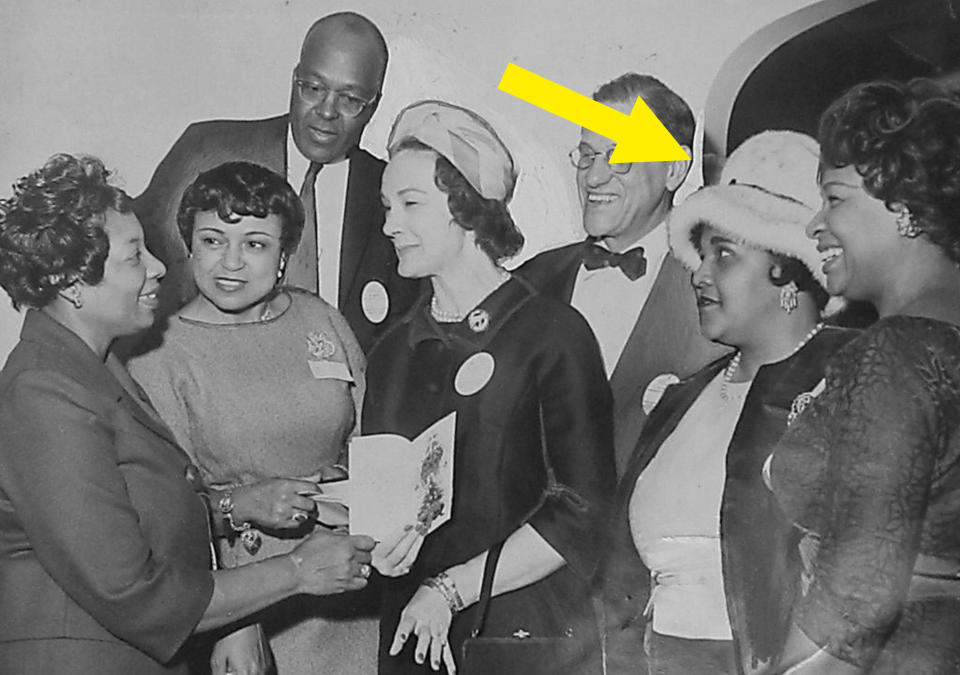20 Facts I Learned This Week That Are So Interesting, They Will Live In My Brain For As Long As I Live
- Oops!Something went wrong.Please try again later.
- Oops!Something went wrong.Please try again later.
- Oops!Something went wrong.Please try again later.
1.While you might already know that Ben Affleck is a pretty big Boston Red Sox fan, did you know that his love for the team is so intense that it nearly caused an on-set shutdown? In 2015, director David Fincher asked Affleck to wear a Yankees cap on-screen while filming Gone Girl. According to Rolling Stone, Affleck refused, citing his love of the Red Sox. The dispute allegedly launched a "one-man riot" that lasted four days, and ended with Affleck sporting a New York Mets hat instead. Affleck confirmed the story to the New York Times, telling them that he refused to don the Yankees apparel because he knew he "would never hear the end of it" from his fellow Sox fans.

2.Princess Diana's relationship with Prince Charles was pretty unconventional from the get-go. Diana and Charles actually went waaaaay back. Diana's older sister, Sarah, dated Charles in 1977. The relationship didn't last long. "There is no chance of my marrying him. I'm not in love with him," she said in 1978. "And I wouldn't marry anyone I didn't love whether he were the dustman or the King of England." Charles and Diana were introduced by Sarah at a party in 1977. "I remember thinking what a very jolly and amusing and attractive 16-year-old she was," he said in 1981. "I mean, great fun, and bouncy and full of life and everything."
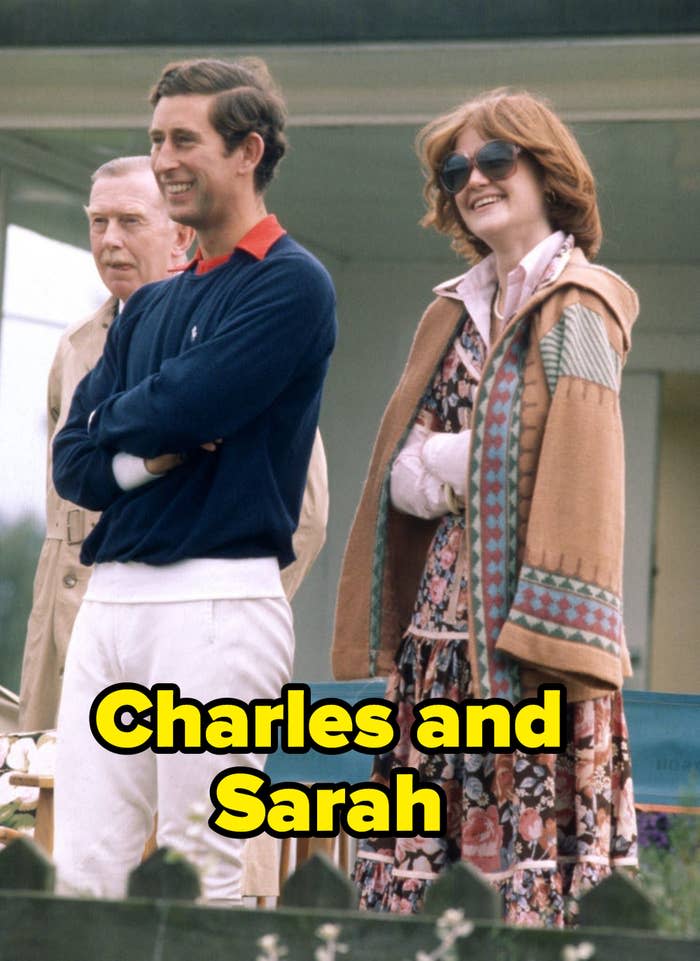
After that initial meeting, Charles and Diana didn't see each other again until 1980, when they both were invited to stay at a mutual friend's house. According to Diana, Charles was going through it emotionally after a recent breakup and the death of a close friend. "He leapt upon me and started kissing me, and I thought, urgh, this is not what people do," she said. "And he was all over me for the rest of the evening, following me around like a puppy." Despite Diana's mixed reaction to Charles, the pair started dating soon after. They reportedly only met in person 13 times before Charles proposed.
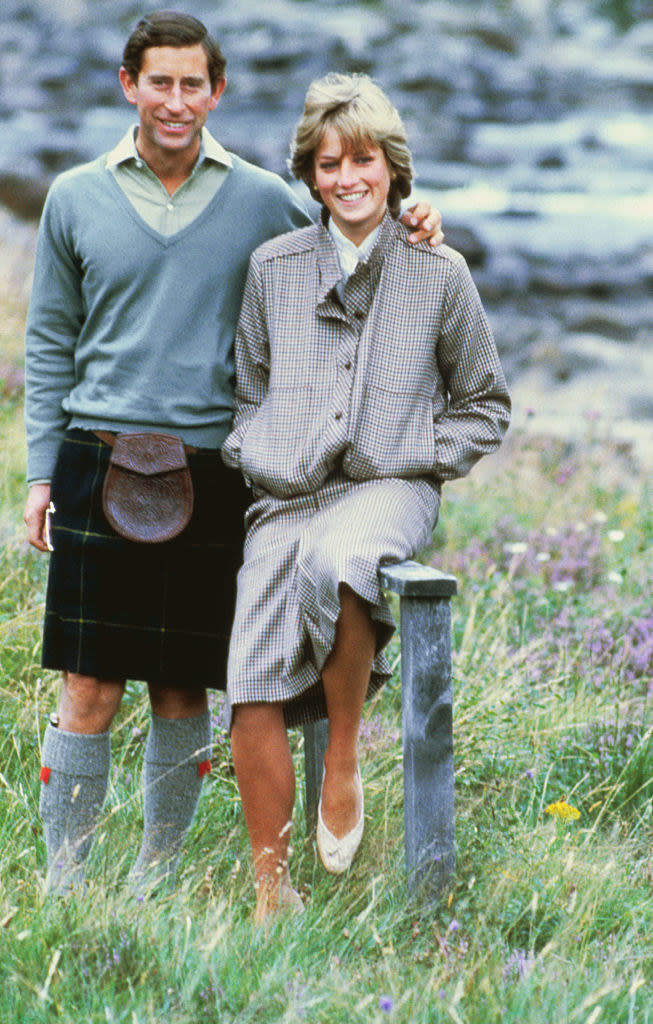
3.Pooping can be life-threatening for a sloth. Sloths have an incredibly slow metabolism — it can take them up to a month to digest a meal. As a result, sloths typically only poop once or twice a month, with their bowel movements clocking in at roughly a third of their body weight. Their bathroom routines are sometimes deadly. Three-toed sloths normally do their business on the ground instead of from the trees where they spend the majority of their time. Sloths have very little muscle mass, and often struggle to support their weight while crawling on the ground, making them incredibly easy targets for predators.

4.On February 14, 1929, a group of unarmed Chicago mobsters were killed in what has since been dubbed the St. Valentine's Day Massacre. The George “Bugs” Moran gang controlled most of the bootlegging on Chicago's North Side, and also ran several casinos and brothels. That morning, several of the gang members traveled to a garage that the gang typically used for storage, likely to complete a job. Around 10:30 a.m., a car with several men, including two in police uniforms, pulled up to the garage and found the seven mobsters inside. Although the gang members were likely all armed, eyewitness accounts claim that none of them pulled their weapons when the intruders arrived in the garage, perhaps because of the police uniforms.
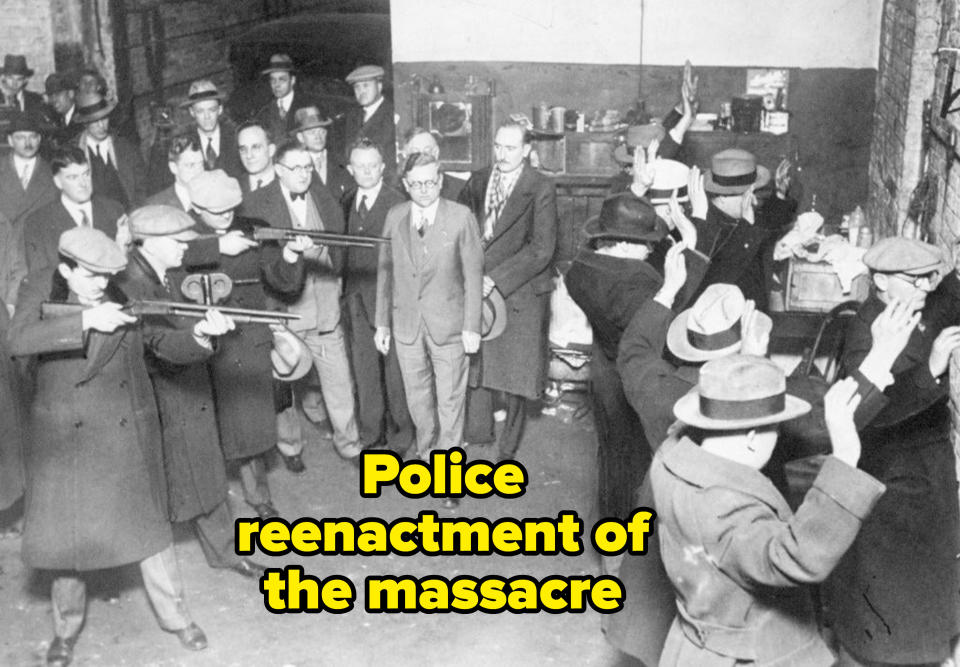
The intruders raised their weapons, instructed the mobsters to get away from the windows and doors, and immediately began firing. Six of the men were killed instantly, with the seventh, Frank Gusenberg, severely injured after being shot 14 times. When police arrived at the crime scene, Gusenberg allegedly refused to talk to the cops, although some reports say that he eventually muttered, "Cops did it." Gusenberg was taken to the hospital, where he died shortly after. Soon, the attention turned to figuring out who was responsible, with many pointing fingers at Al Capone and his gang. At the time of the massacre, Capone was at a Florida courthouse, where he was being interviewed about his potential involvement in the murder of Capone's former mentor.
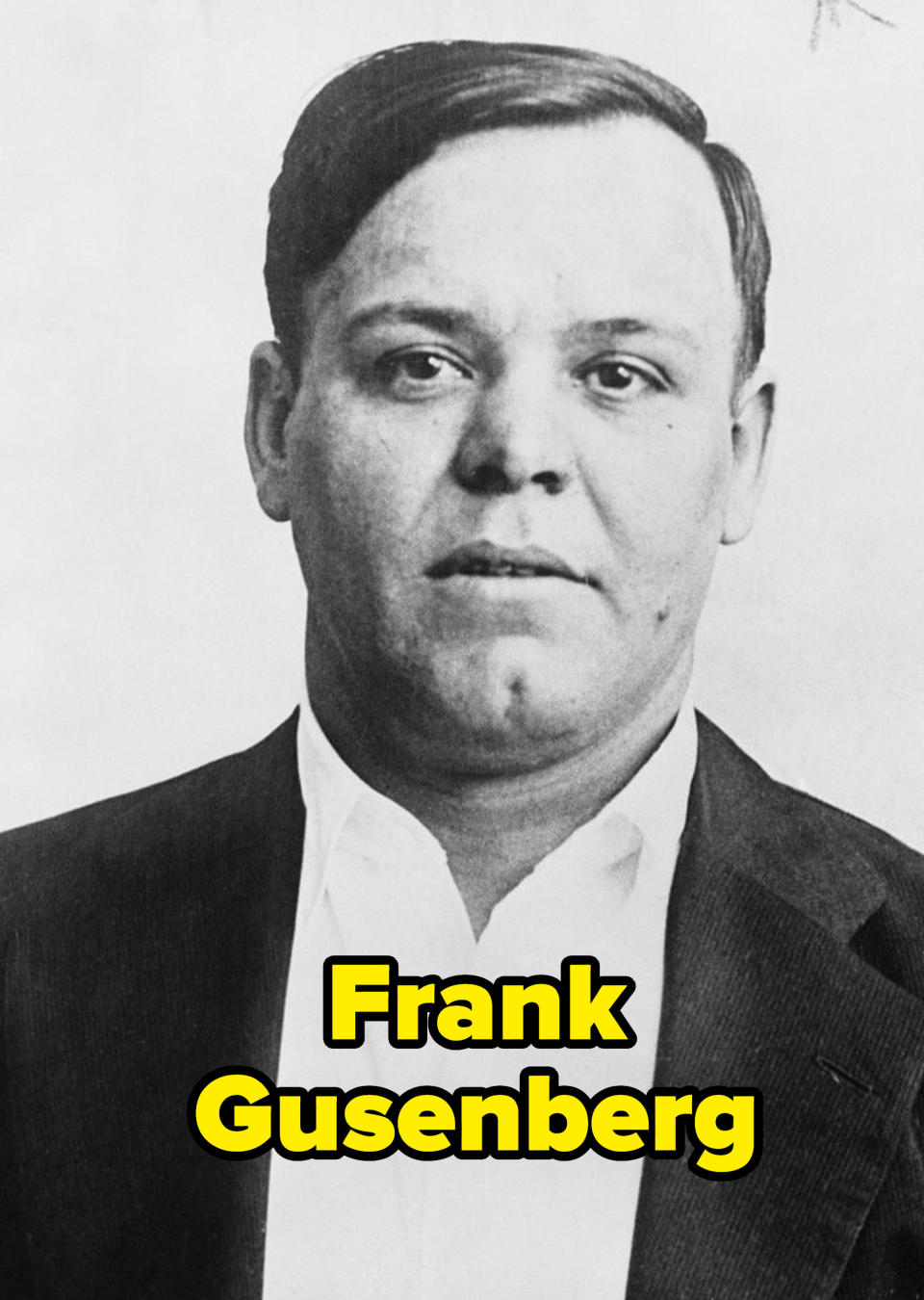
As news about the murders began to spread, Capone reportedly felt incredibly confident that he wouldn't be accused, given his alibi. Some thought the police truly were behind the crimes, while others pointed fingers at Detroit's Purple Gang, who were allegedly seeking payback after one of their whiskey trucks had been hijacked. Authorities also investigated potential links between the murders and a recent election where Capone and Moran supported competing candidates. Moran was even considered a suspect at one point. Meanwhile, US attorney George E. Q. Johnson was looking to finally put Capone behind bars, even though he couldn't find any direct evidence to indict the gangster. President Herbert Hoover was also desperate to arrest Capone to prove that he was serious about eliminating crime.
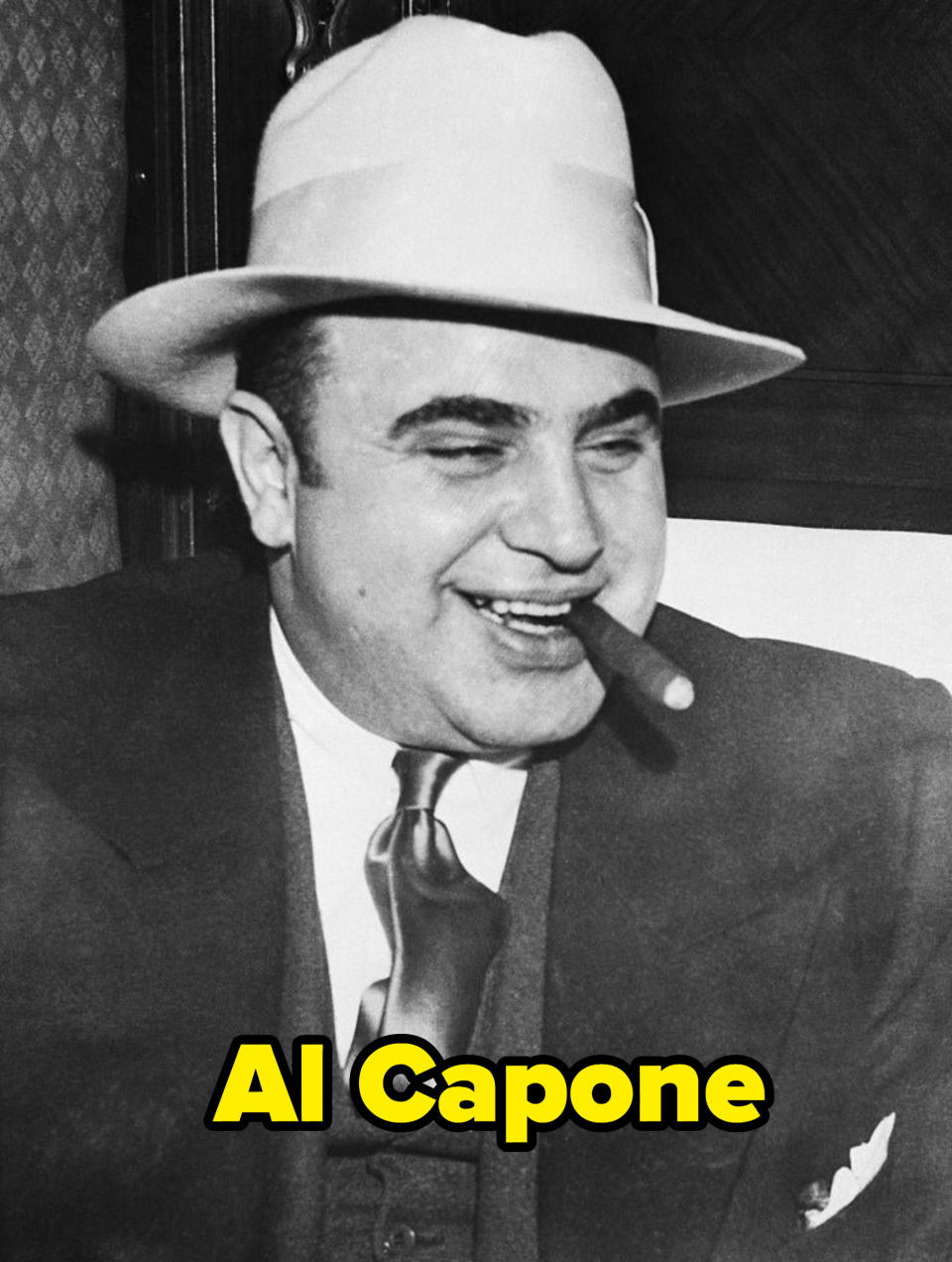
In December 1929, Fred “Killer” Burke was arrested for shooting a police officer. Ballistic evidence connected Burke's gun to one used during the massacre. Burke refused to cooperate, and died in prison in 1940 without ever answering any questions related to the killings. In January 1935, Bryan Bolton, a bank robber looking to shorten his prison sentence, told authorities that Capone was responsible for the murders. Bolton's story had holes, but led to the reveal of a letter that claimed William “Three-Fingered Jack” White organized the massacre to get revenge for the death of his cousin. The cousin was the son of a police officer, thus explaining the men at the scene wearing police uniforms. The issue? White had been killed in 1934, so police couldn't go after him for the crime. The case was closed, and Capone was eventually arrested on a charge of felony income-tax evasion.
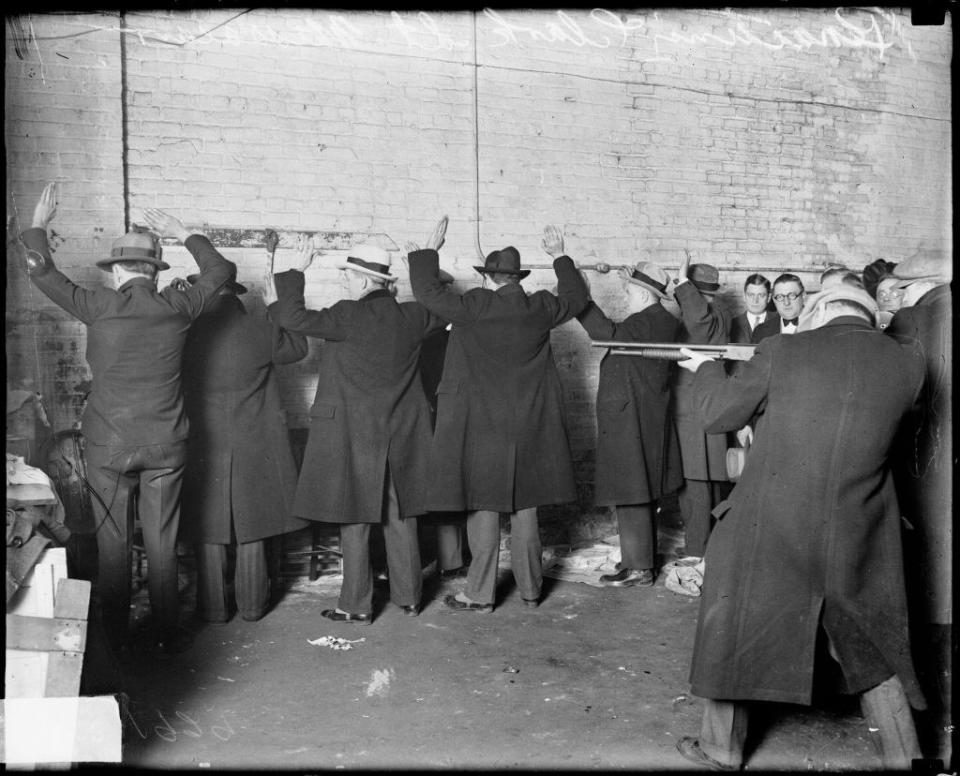
5.After astronaut Alan Shepard became the first American man in space in 1961, Chevrolet gifted him a Corvette. Both General Motors and NASA were unsure about the gift: Astronauts were not allowed to endorse products, and GM worried that it would set a precedent where they would have to give cars to all future astronauts. Instead, the company decided to develop a new program. Astronauts could lease up to two Chevrolets a year for the low price of $1. Six of the seven astronauts on the original Mercury mission ended up participating in the program, each leasing both a family car and a Corvette. Many of the Apollo astronauts later took advantage of the special offer as well.
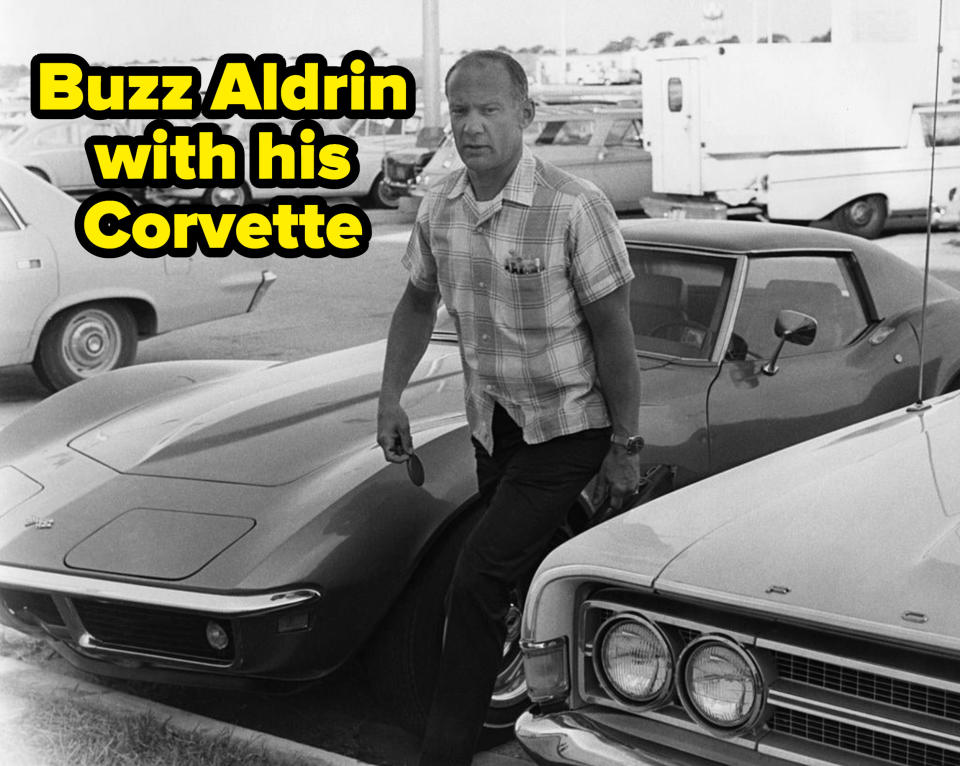
6.I'm truly delighted every time a clip featuring Ina Garten, commonly known as the Barefoot Contessa, comes across my For You page on TikTok, so I decided to deep dive into the life of the culinary legend. Before becoming a beloved chef, Garten actually worked in the White House! In 1974, Garten got a job working in the Office of Management and Budget. She soon moved to the Nuclear Regulatory Commission. By 1976, Garten was responsible for writing the organization's budget. Garten's White House tenure spanned both the Carter and Ford administrations.
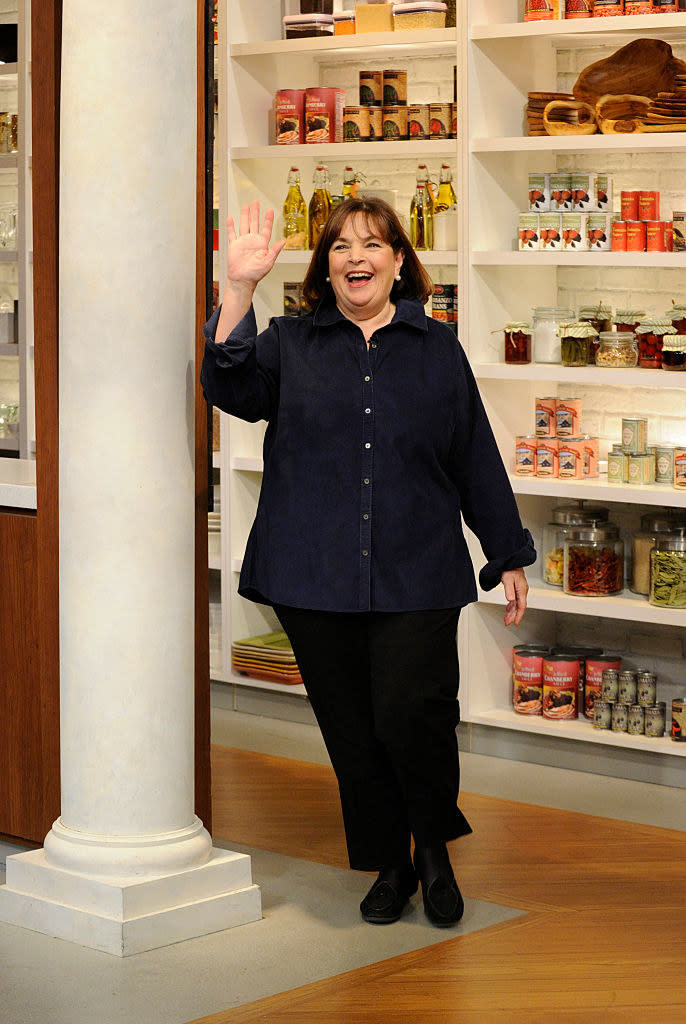
Garten ultimately decided to leave politics at age 30, and started flipping houses with her husband, Jeffrey. In 1978, she opened a high-end grocery store in the Hamptons, which she called Barefoot Contessa. The move was risky because Garten had no prior food experience, and had only started cooking a few years before by using Julia Child's recipes. "My job in Washington was intellectually exciting and stimulating, but it wasn't me at all," she told the New York Times in 1981. The store ended up doing so well that Garten was able to spin it off into a cookbook and TV show empire.

7.Conversation hearts have been a Valentine's Day staple for over a century. The hearts were developed by the New England Confectionary Company, better known as Necco, in 1902. Necco co-founder Oliver Chase developed the technology to print words onto candy. The company now makes between 4.8-6.7 billion hearts each Valentine's season. Although the hearts are in production for 11 months of the year, they're only sold in a 6-week window between the New Year and Valentine's Day.

8.How to Lose a Guy in 10 Days recently celebrated its 20th anniversary, so let's reminisce on some of the best behind the scenes facts about the rom-com classic! Although I simply cannot imagine the movie without Kate Hudson, she actually wasn't the first choice to star. Producers had originally tapped Gwyneth Paltrow to take on the role of Andie Anderson, but scheduling conflicts forced her to drop out. Hudson's starring turn in Almost Famous ended up putting her on the producers' radar. Hudson also advocated for Matthew McConaughey to star as the male lead, convincing producers that he was a better fit than the unnamed star they had originally selected.
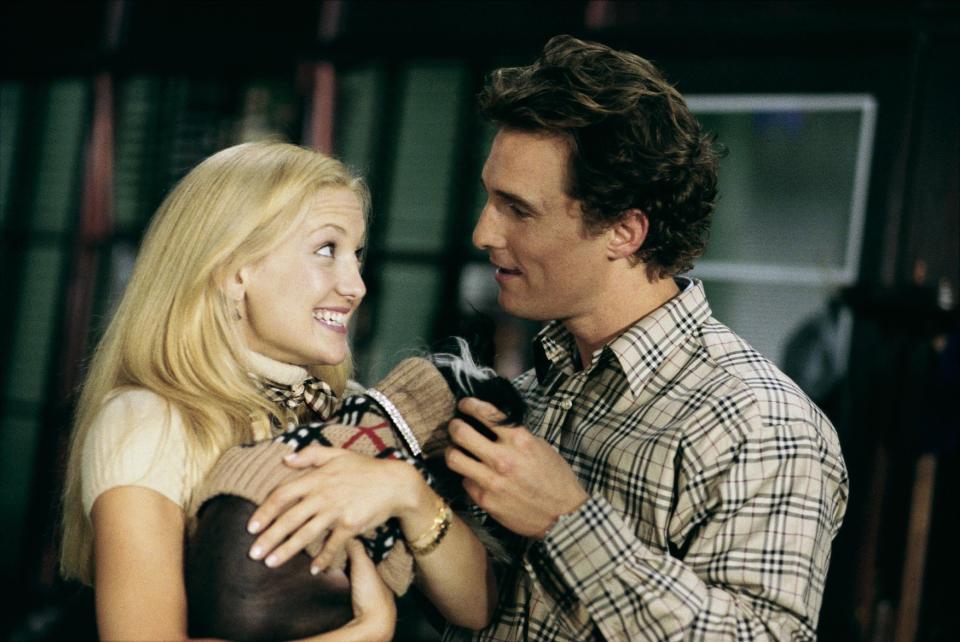
Before filming started, Hudson reportedly spent a day shadowing Vogue editor Anna Wintour in order to play a magazine journalist. McConaughey and Hudson ad-libbed many of the movie's most iconic moments, including the memorable scene where Hudson's character crashes McConaughey's boys' night. When the movie was finally completed, it was screened for test audiences. While the filmmakers said they weren't necessarily surprised by the rave reviews from female audiences, they were shocked by how much male viewers loved the movie. "Men of all ages gave it an 89 [out out 100]," director Donald Petrie said. "One of the things that I like the most about the outcome of this movie is it's the ultimate chick flick for guys."
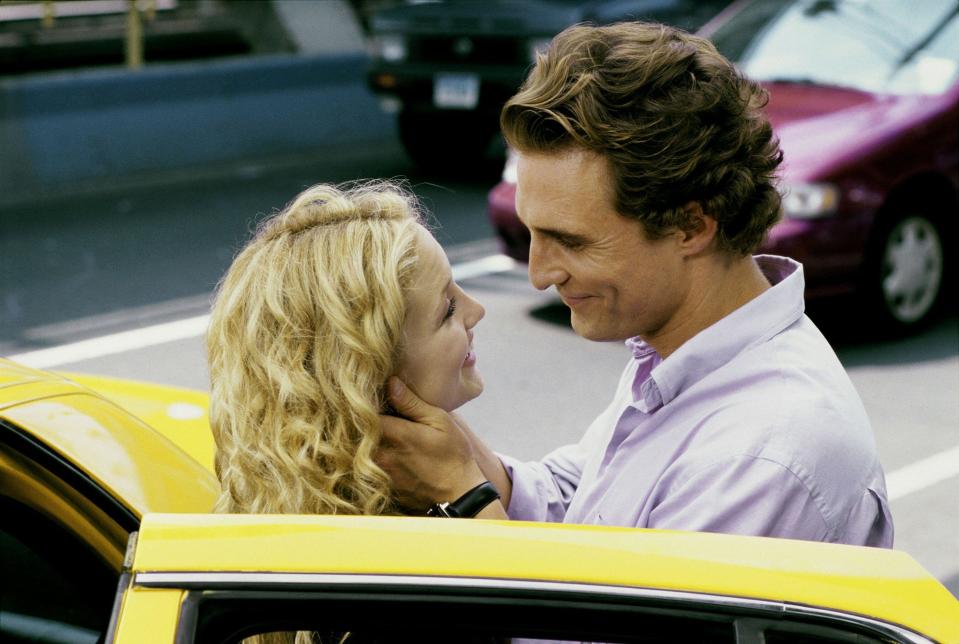
9.The bleeding heart flower is believed to represent lost love and heartbreak. The plant gets its name from its droopy pink flowers, which are heart-shaped. Beneath the pink petals is typically a single white petal, which some say resembles a drop of blood.

10.Elvis Presley had a rather unique relationship with several US presidents. After all, his (honestly, very bizarre) meeting with Richard Nixon has gone on to be one of the most famous pictures of all time. In 2015, it was the most requested photo from the US National Archives, and the meeting has since spawned an entire movie. In 1970, Elvis decided he wanted a federal narcotics agent badge, because he believed it meant that he would be able to travel the world with whatever guns and drugs he wanted, no questions asked. Upon spontaneously arriving in Washington, DC, Presley called the White House and reportedly told Nixon, "I will be here for as long as it takes to get the credentials of a federal agent."
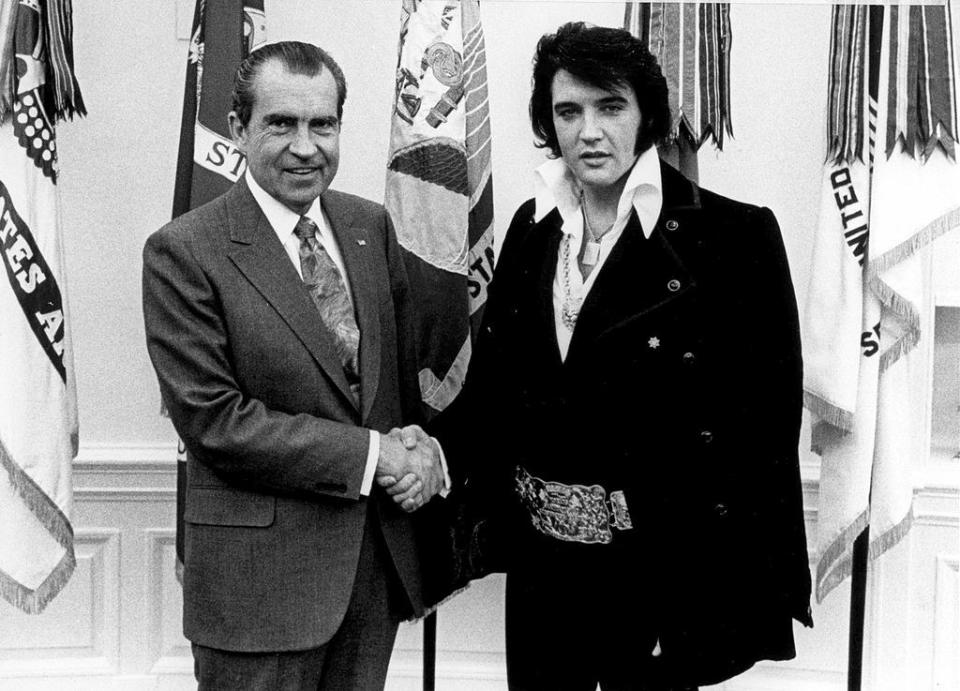
The meeting began with Presley reportedly telling Nixon that the Beatles were responsible for an increase in anti-American sentiments. Presley went on to add that he had been closely studying communism and the rise in psychedelic drug culture in the United States to help him make his case for the badge. Despite not having any training or legitimate need to have the badge, Nixon granted the request but ended up giving Elvis a badge that had no actual power. To close out the trip, Elvis gifted Nixon a handgun from World War II that Presley had taken off the wall in his Los Angeles mansion before boarding his flight to the White House.
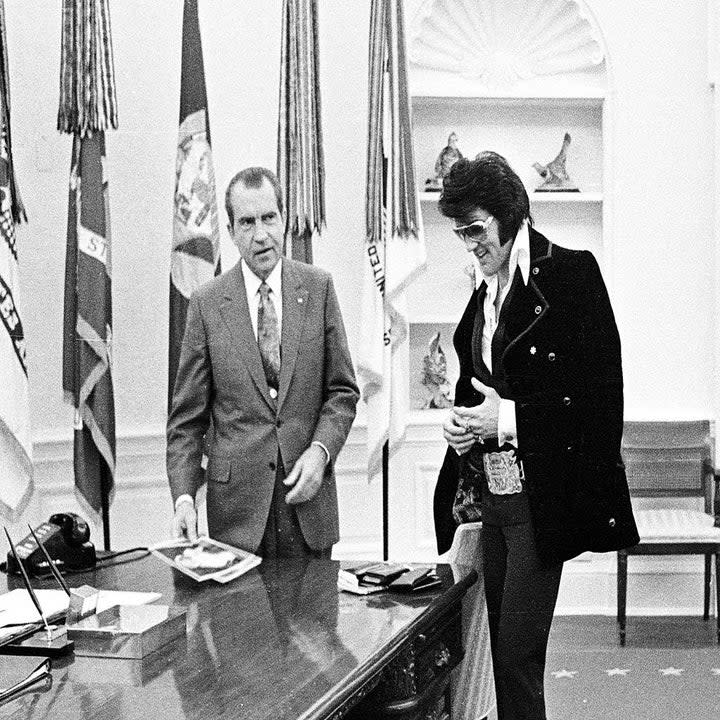
Nixon wasn't the only president Elvis interacted with. Jimmy Carter told the New Yorker that he once got a rather interesting phone call from the singer. "When I was first elected President, I got a call from Elvis Presley," Carter said. "He was totally stoned and didn’t know what he was saying. His sentences were almost incoherent." Carter added that Presley was seeking a presidential pardon for a sheriff he was friends with who had gotten in some legal trouble. Presley allegedly continued to call Carter regarding the pardon for weeks, although Carter said he didn't accept the calls. The phone call occurred in 1977, likely just weeks before Presley died.

11.Giraffes were actually originally known as camelopards. Legend has it that Julius Caesar brought the first giraffe to Europe, where many believed it looked like a cross between a camel and a leopard. The scientific name for the Northern giraffe species still references the camelopard moniker, and is known as Giraffa camelopardalis.

National Geographic / Via giphy.com
12.You know how sometimes those businesses that claim to be named after real people just use a fake name that sounds catchy? That's not the case with Famous Amos cookies, which is named after Wally Amos, who was also the first Black talent agent at William Morris, one of the biggest agencies in the country. In 1975, Amos started the company using $25,000 he received from Marvin Gaye and Helen Reddy, who were clients of his. Amos famously would send his signature chocolate chip cookies to potential clients. “I'd go to meetings with record company or movie people and bring along some cookies, and pretty soon, everybody was asking for them,” Amos told the New York Times in 1975.
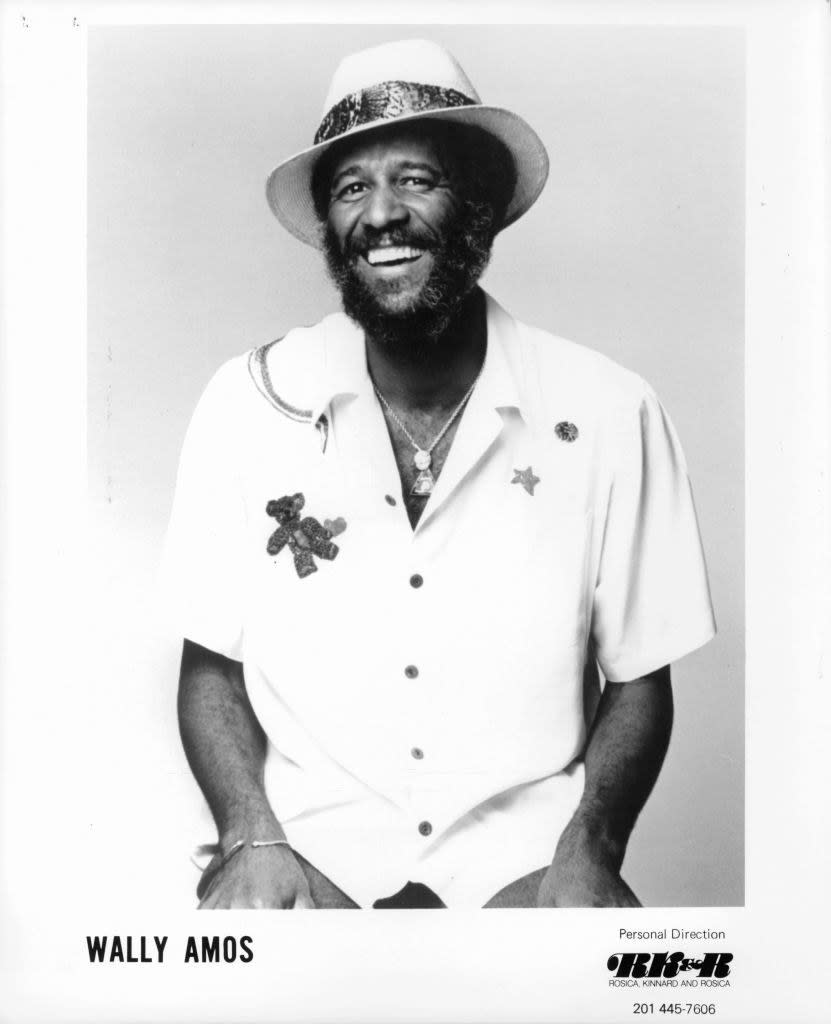
In the company's first year, Amos sold over $300,000 worth of cookies, and by 1982, the company had made $12 million in revenue. Just a few years later, Amos, who was reportedly bad with money, lost control of the company. Although he remained onboard as a paid spokesperson, he left shortly after. "The first couple of years after I left Famous Amos, I didn't even make cookies anymore, and I used to always make cookies at home," he said. "I didn't even want to talk about chocolate-chip cookies, really. I shaved my beard and stopped wearing hats," he added, referring to the signature caricature on the brand's packaging.
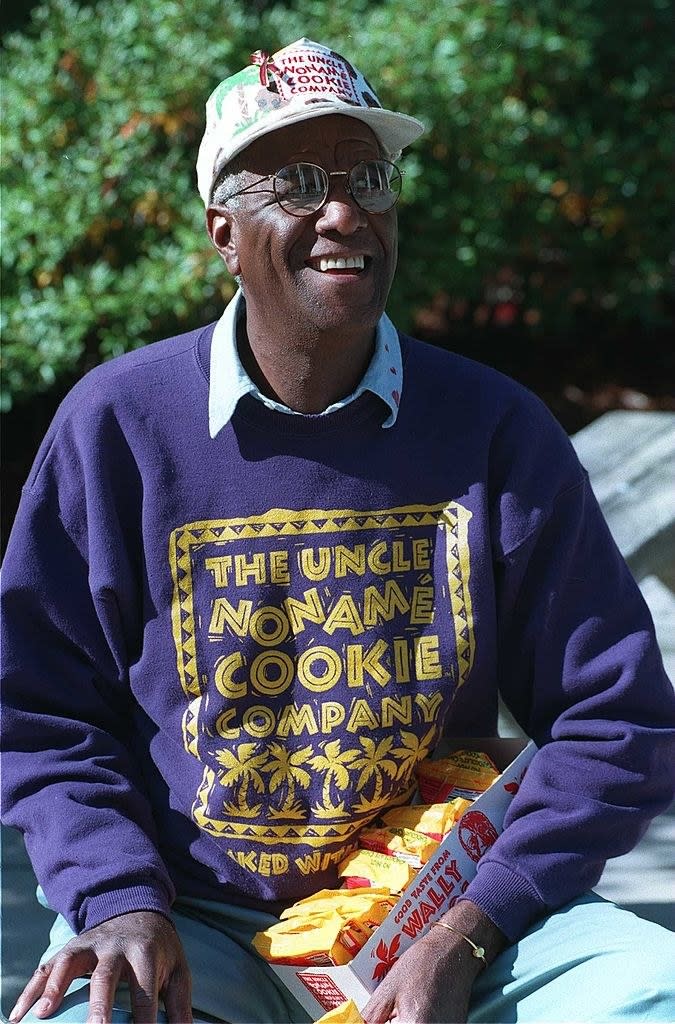
After Amos was ousted from the company, he tried to start a new cookie brand, which he called Wally Amos Presents. Famous Amos sued him for copyright infringement, so he changed the business name to Uncle Noname. In March 1999, he reached an agreement with Keebler, who had acquired the business several years earlier. They allowed him use of the Amos name and extended him a two-year promotional contract. "He was happy to be back in the center of the brand he started, but he also had a hard time accepting the fact that at the end of the day, he was just a paid spokesperson," his son revealed. Amos never stopped hustling in the cookie business, and even appeared on an episode of Shark Tank to pitch a company called The Cookie Kahuna.

13.After the Titanic wreckage was discovered in 1985, many started to wonder who technically could claim ownership of the boat. White Star Line, the original owner, had dissolved, and the paper trail for the ship's insurance had become increasingly difficult to track over the years. There were also laws in place that complicated things by stating that ship wreckage found in international waters technically belongs to no one. Soon, an organization called RMS Titanic, Inc. was named the salvor-in-possession of the ship, and faced several legal challenges from groups claiming they had true ownership. The organization rescued over 5,000 artifacts from the wreckage from 1987 to 2004, and must consistently display repeated salvage efforts in order to maintain ownership.

14.In 1981, Lionel Richie and Diana Ross collaborated on the song "Endless Love," which served as the theme song for the film of the same name. The song went on to become the biggest duet in the history of the Billboard charts, but it wasn't always intended to be a duet! Jon Peters, the film's producer, and director Franco Zeffirelli originally asked Richie to compose an instrumental theme song for the movie. After all, Richie, who was still a member of the band the Commodores at the time, was fresh off of a slew of No. 1 hits, all of which were love songs. Richie was later asked if he could add lyrics to the instrumental track he composed.
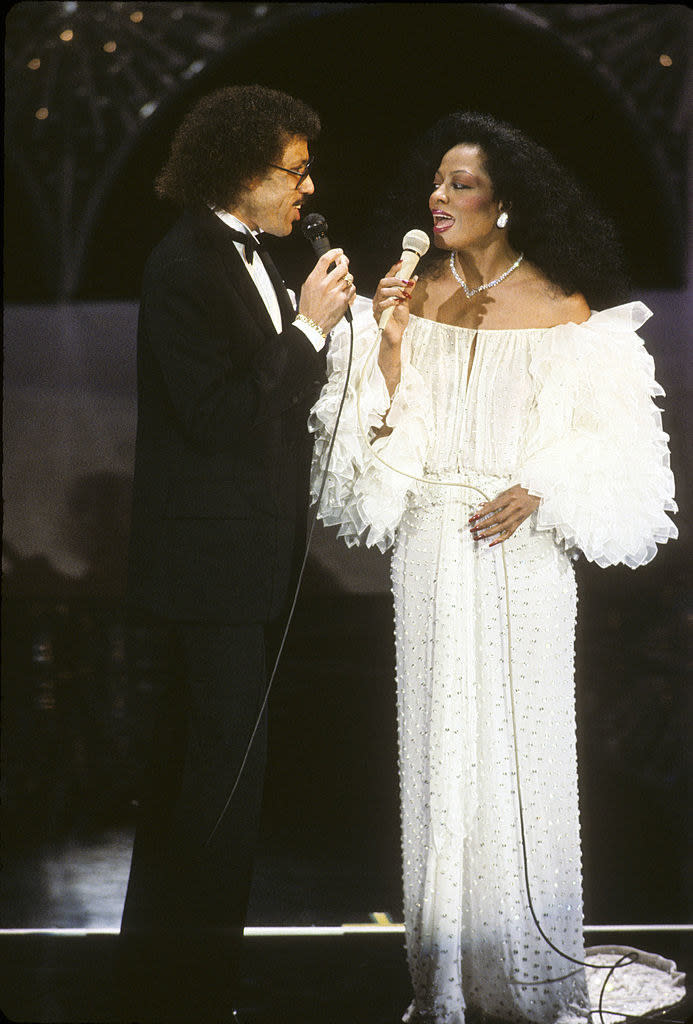
Meanwhile, Diana Ross had just split from Motown after being offered $20 million to move to RCA, which was the largest recording contract in history at the time. Despite the split, Zeffirelli decided that Richie's song needed a female counterpart, and tapped Ross for the job. RCA and Motown ended up working out an agreement, allowing Ross to record the track for her former label. Although the business logistics worked out quite nicely, Richie and Ross had some issues of their own. They both were incredibly busy, and ended up having to record the song at 3 a.m. at a recording studio in Reno after one of Ross's concerts. The pair reportedly didn't get along very well, and Richie was allegedly annoyed that his song was turned into a duet. Despite this, the song went on to become a massive hit.
15.Although romance novels frequently face criticism, they're actually one of publishing's most successful genres. Romance novels first started to appear in the 18th century, and became sources of escapism for women of the time period who felt constrained by societal norms. Although the popularity of romance novels petered out in the 19th century, they saw a resurgence in the early 20th century. Many of the popular romance novels had a historical fiction element. Soon, gothic romance novels, like Daphne du Maurier's 1938 classic Rebecca, became extremely popular. This time period also saw authors beginning to use pseudonyms in order to try out different romance subgenres.

ABC / Via giphy.com
In the 1950s, romance novels began to feature women with unique careers, breaking away from the idea that all women had to become mothers and housewives. In 1970, Gordon Merrick published The Lord Won't Mind, which was one of the first gay romance novels, and became a bestseller. The 1970s also saw the emergence of the bodice ripper. These books began to incorporate sexually explicit scenes into the narrative, but faced criticism for featuring rape and abuse as elements of a love story. Soon, Harlequin became the first imprint to publish romance novels that directly targeted female readers. In the 1980s, Fabio Lanzoni started to model for romance novel covers. Lanzoni has since appeared on at least 460 romance novels, with some believing the actual total is closer to 1,000.

In a strange turn of events, some of history's most feared dictators tried their hand at romance novels, with both Iraqi dictator Saddam Hussein and Italian dictator Benito Mussolini publishing love stories. Hussein's novel, Zabiba and the King, was published in 2000. In the book, a king, who is based on Hussein, falls in love with a villager. The CIA read the book to see if it contained any insight into Hussein's views, and concluded that it was likely written by a ghostwriter with Hussein's supervision. Meanwhile, Mussolini's book, The Cardinal's Mistress, was published in 1910. Mussolini actually wrote the book, which contains heavy criticism of the Catholic church, because he was in need of money before rising to political power.
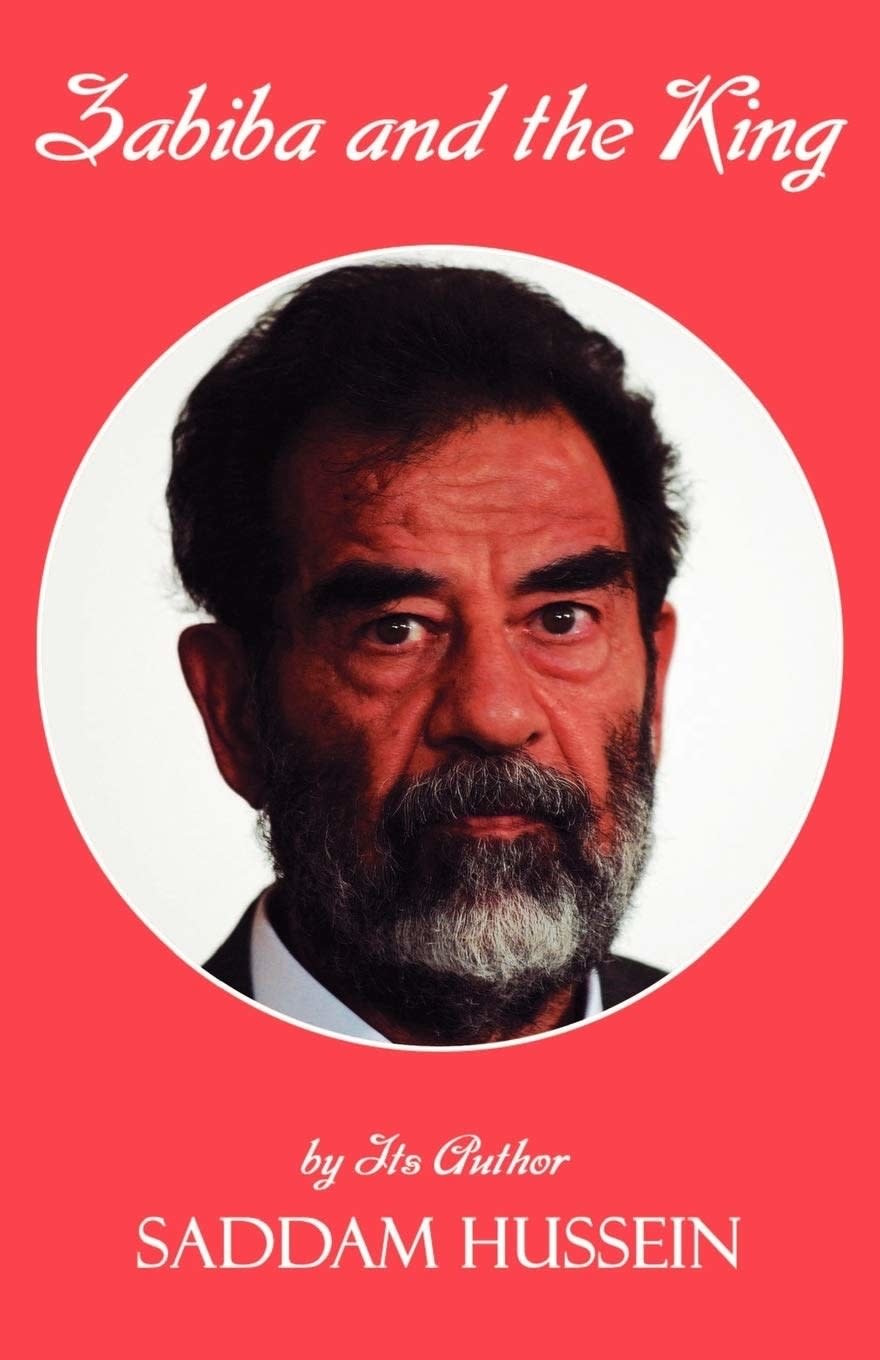
16.In the 1960s, Joan Rivers frequently performed stand-up at bars and comedy clubs before becoming a late night TV staple. She allegedly earned her big break on The Ed Sullivan Show by accident. Sullivan was reportedly supposed to announce that singer Johnny Rivers was slated to appear in a teaser for an upcoming episode, but he misspoke and said Joan Rivers instead. Rivers went on to appear on the show 20 more times after her initial 1966 appearance.
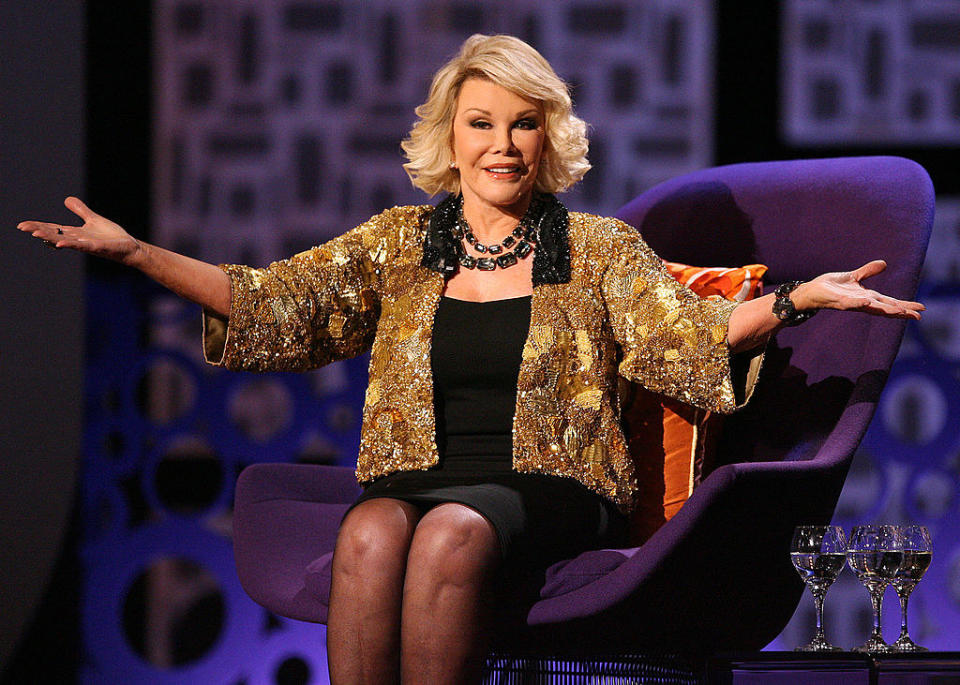
Rivers also frequently appeared on The Tonight Show during Johnny Carson's tenure as host. She was eventually named a permanent guest host. Carson eventually banned Rivers in 1986 after she accepted a hosting job for Fox. The feud got so bad that Carson's talent bookers allegedly told potential guests that they would be blackballed from appearing if they went on Rivers's show. After her show was canceled after just one season, Rivers's husband died by suicide. Carson allegedly refused to reach out to Rivers. “It was like Stalin had sent me to Siberia," she said. When Jay Leno took over the show, he reportedly wanted to honor Carson's wishes, and didn't invite Rivers to appear. After Jimmy Fallon was named host in 2014, he invited Rivers to appear on his first show, 49 years to the day of her first appearance.
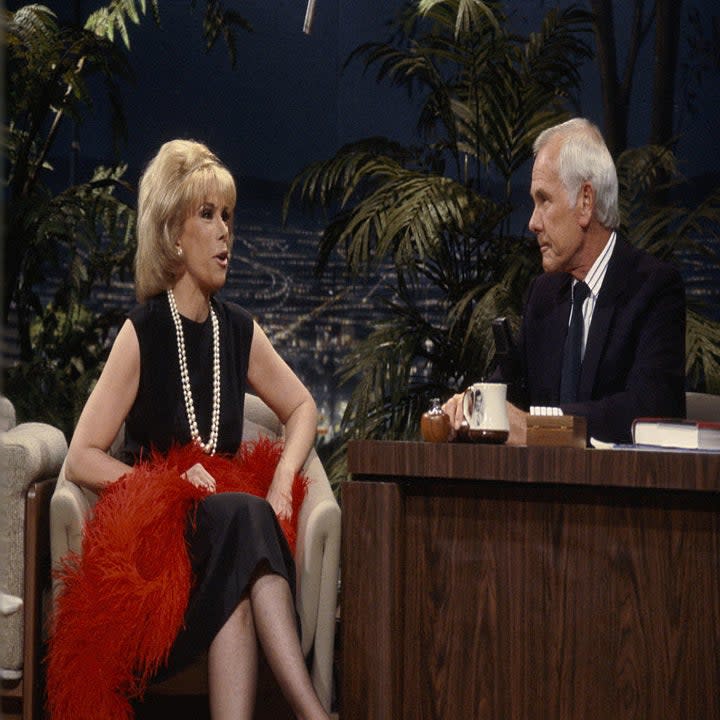
17.Love hurts: Over the past five years, the Federal Trade Commission reported that people have lost over $1.3 billion to "romance scams," or people who defraud others using fake dating profiles. After they charm people, the scammers will then ask for money, then disappear. In 2022, nearly 70,000 people reported being tricked by a romance scam, with a median loss of $4,400. The FTC also noted that beginning in 2021, many of these scams have been linked to cryptocurrency. Some of the most common scam attempts usually involve phrases like "I or someone close to me is sick, injured, or in jail," "I can teach you to invest," or "I'm in the military far away."
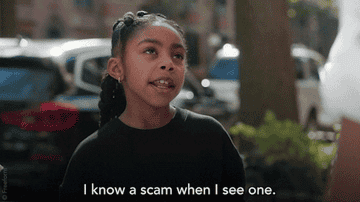
Freeform / Via giphy.com
18.In 1965, producers were hopeful that The Dating Game would change the TV game show landscape. The show's premise was unique: A woman would quiz three men in order to decide which one she wanted to date. The catch? They wouldn't be able to see each other face to face until the winner was selected, so it all came down to the verbal chemistry between the couples. When early tapings began, producer Chuck Barris had a problem. Many of the contestants decided to make a splash by answering the questions with sexually explicit innuendos, making the episodes too inappropriate to air.
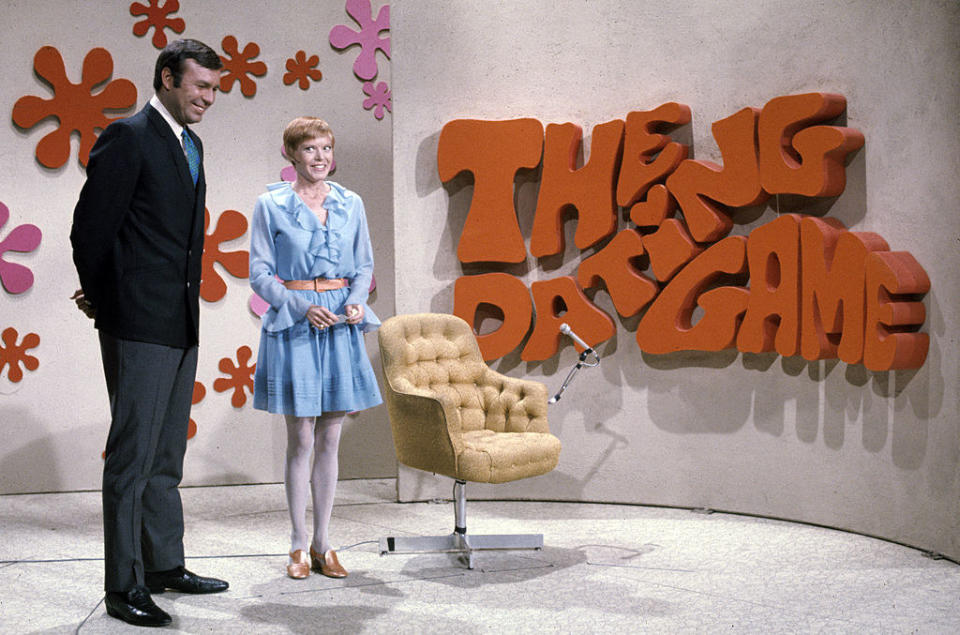
Barris decided he would need to scare the contestants into acting appropriate at future tapings. He hired an actor to dress up like a law enforcement official and enter the green room before the taping began. The actor told the men that if they used profanity or sexual references, they would likely be flagged by the Federal Communications Commission and would be charged with a federal offense that might even come with jail time. The stunt apparently worked. Barris reported that there was no more funny business once the taping began. The Dating Game was an immediate hit after it debuted in 1965, and wound up running until 1973, paving the way for many more dating shows on network TV.
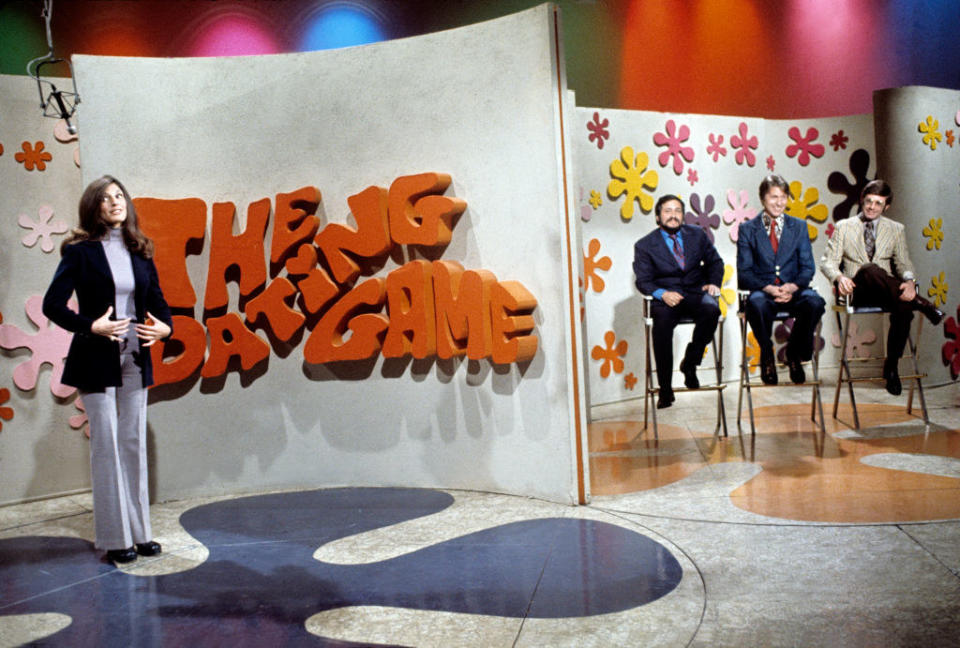
19.Candy reigns supreme as the top Valentine's Day gift in the United States. Over 44% of people surveyed by Statista said candy or chocolate is their go-to gift. Cards came in second, followed by flowers, a romantic dinner, and wine.

NBC / Via giphy.com
20.And finally, Ethel Payne, known as the First Lady of the Black Press, chronicled key moments of the Civil Rights Movement for the Chicago Defender. After finishing school, Payne moved from her Chicago hometown to Japan to work for the Army Special Services club. In 1950, Payne began writing diary entries about the segregation and mistreatment of Black soldiers she witnessed during the Korean War. After showing excerpts to a journalist covering the war, Payne decided to send her observations to the Chicago Defender, a Black newspaper. Although the Defender saw a boost in circulation from printing Payne's work, she faced criticism for "upsetting the morale of the troops." In 1951, Payne began writing full-time for the paper.
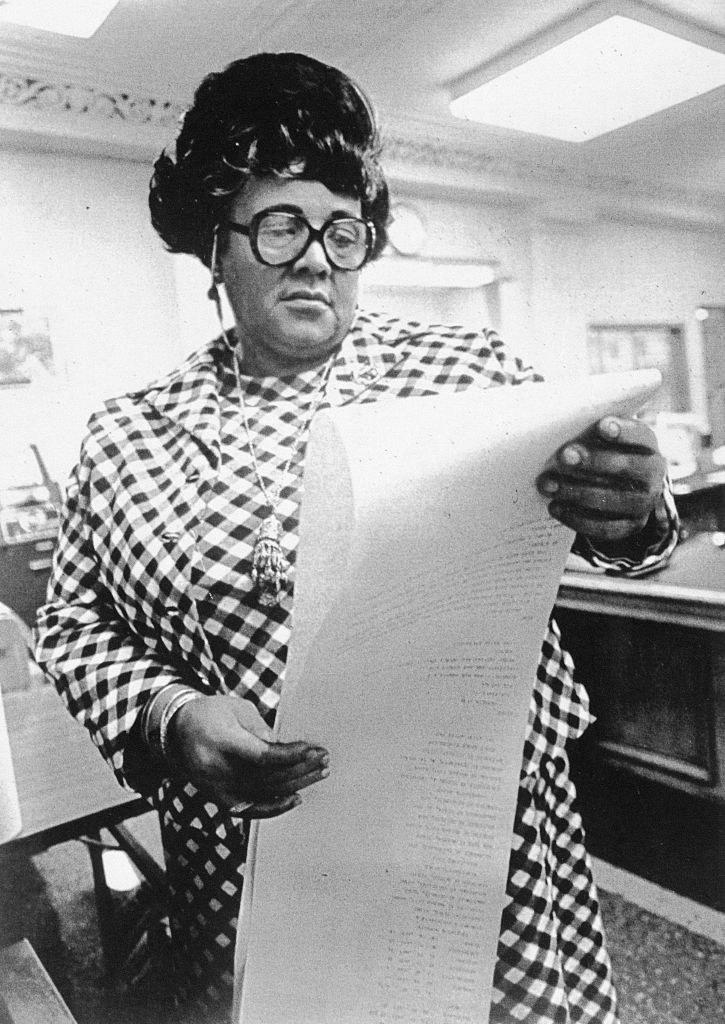
Payne worked to cover stories that didn't get a lot of coverage elsewhere. In 1952, she moved to Washington, DC, where she began covering the Civil Rights Movement. Her work pointed out that people needed to "goad lawmakers" into following through with their promises. Payne became the first Black woman to join the White House Press Corps, where she was known for pressing President Eisenhower on issues relating to desegregation. He notably refused to call on her after he responded poorly to one of her tough questions, which garnered a lot of criticism in the press. The administration even attempted to discredit her as a journalist, and allegedly ran an investigation into her background and finances. In 1970, Payne became the first Black woman to appear on a national network as a radio and television commentator.
